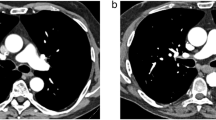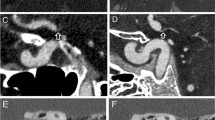Abstract
Background
The field of nuclear cardiology is limited by image quality and length of procedure. The use of depth-dependent resolution recovery algorithms in conjunction with iterative reconstruction holds promise to improve image quality and reduce acquisition time. This study compared the Astonish algorithm employing depth-dependent resolution recovery and iterative reconstruction to filtered backprojection (FBP) using both full-time (FTA) and half-time (HTA) data. Attenuation correction including scatter correction in conjunction with the Astonish algorithm was also evaluated.
Methods
We studied 187 consecutive patients (132 with cardiac catheterization and 55 with low likelihood for CAD) from three nuclear cardiology laboratories who had previously undergone clinically indicated rest/stress Tc-99m sestamibi or tetrofosmin SPECT. Acquisition followed ASNC guidelines (64 projections, 20-25 seconds). Processing of the full-time data sets included FBP and Astonish (FTA). A total of 32 projection data sets were created by stripping the full-time data sets and processing with Astonish (HTA). Attenuation correction was applied to both full-time and half-time Astonish-processed images (FTA-AC and HTA-AC, respectively). A consensus interpretation of three blinded readers was performed for image quality, interpretative certainty, and diagnostic accuracy, as well as severity and reversibility of perfusion and functional parameters.
Results
Full-time and half-time Astonish processing resulted in a significant improvement in image quality in comparison with FBP. Stress and rest perfusion image quality (excellent or good) were 85%/80% (FBP), 98%/95% (FTA), and 95%/92% (HTA), respectively (p < 0.001). Interpretative certainty and diagnostic accuracy were similar with FBP, FTA, and HTA. Left ventricular functional data were not different despite a slight reduction in half-time gated image quality. Application of attenuation correction resulted in similar image quality and improved normalcy (FTA vs. FTA-AC: 76% vs. 95%; HTA vs. HTA-AC: 76% vs. 100%) and specificity (FTA vs. FTA-AC: 62% vs. 78%; HTA vs. HTA-AC: 63% vs. 84%) (p < 0.01 for all comparisons).
Conclusion
Astonish processing, which incorporates depth-dependent resolution recovery, improves image quality without sacrificing interpretative certainty or diagnostic accuracy. Application of simultaneously acquired attenuation correction, which includes scatter correction, to full-time and half-time images processed with this method, improves specificity and normalcy while maintaining high image quality.










Similar content being viewed by others
References
American Society of Nuclear Cardiology. Imaging guidelines for nuclear cardiology procedures. J Nucl Cardiol 2006;13(6):e25-171.
Borges-Neto S, Pagnanelli RA, Shaw LK, Honeycutt E, Shwartz SC, Adams GL, et al. Clinical results of a novel wide beam reconstruction method for shortening scan time of Tc-99m cardiac SPECT perfusion studies. J Nucl Cardiol 2007;14(4):555-65.
Ye J, Song X, Zhao Z, Da Silva AJ, Weiner JS, Shao L. Iterative SPECT reconstruction using matched filtering for improved image quality. In: IEEE nuclear science symposium conference record, 29 Oct-1 Nov 2006, San Diego, CA; 2006. p. 2285-7.
Diamond GA, Forrester JS. Analysis of probability as an aid in the clinical diagnosis of coronary-artery disease. N Engl J Med 1979;300(24):1350-8.
Henzlova MJ, Cerqueira MD, Mahmarian JJ, Yao SS. Stress protocols and tracers. J Nucl Cardiol 2006;13(6):e80-90.
Case JA, Cullom SJ, Bateman TM. Myocardial perfusion SPECT attenuation correction. In: Iskandrian AE, Verani MS, editors. Nuclear cardiac imaging: principles & applications. New York: Oxford University Press; 2002.
Case JA, Hsu BL, Bateman TM, Cullom SJ. A Bayesian iterative transmission gradient reconstruction algorithm for cardiac SPECT attenuation correction. J Nucl Cardiol 2007;14(3):324-33.
Cullom SJ, Krishnendu S, Hsu B. Downscatter compensation for attenuation correction with rapid 32-angle simultaneous Tc-99m emission–gadolinium-153 transmission scanning. J Nucl Cardiol 2007;14(Suppl 1):S98.
Cullom SJ, Saha K, Case JA. Accurate reconstruction of rapidly acquired 32-angle Gd-153 scanning line source transmission projections for myocardial perfusion SPECT attenuation correction. J Nucl Cardiol 2007;14(Suppl 1):S98-9.
Noble GL, Ahlberg AW, Kokkirala AR, Cullom SJ, Bateman TM, Cyr GM, et al. Validation of attenuation correction using transmission truncation compensation with a small field of view dedicated cardiac SPECT camera system. J Nucl Cardiol 2009;16(2):222-32.
Cerqueira MD, Weissman NJ, Dilsizian V, Jacobs AK, Kaul S, Laskey WK, et al. Standardized myocardial segmentation and nomenclature for tomographic imaging of the heart: A statement for healthcare professionals from the Cardiac Imaging Committee of the Council on Clinical Cardiology of the American Heart Association. Circulation 2002;105(4):539-42.
Bland JM, Altman DG. Statistical methods for assessing agreement between two methods of clinical measurement. Lancet 1986;1(8476):307-10.
Einstein AJ, Moser KW, Thompson RC, Cerqueira MD, Henzlova MJ. Radiation dose to patients from cardiac diagnostic imaging. Circulation 2007;116(11):1290-305.
Committee to Assess Health Risks from Exposure to Low Levels of Ionizing Radiation NRCotNA. Health risks from exposure to low levels of ionizing radiation: BEIR VII Phase 2. Washington, DC: The National Academies Press; 2006.
Schroeder-Tanka JM, Tiel-van Buul MM, van der Wall EE, Roolker W, Lie KI, van Royen EA. Should imaging at stress always be followed by imaging at rest in Tc-99m MIBI SPECT? A proposal for a selective referral and imaging strategy. Int J Card Imaging 1997;13(4):323-9.
Heller GV, Bateman TM, Johnson LL, Cullom SJ, Case JA, Galt JR, et al. Clinical value of attenuation correction in stress-only Tc-99m sestamibi SPECT imaging. J Nucl Cardiol 2004;11(3):273-81.
Bateman TM, Heller GV, McGhie AI, Courter SA, Kennedy KF, Katten D, et al. Application of simultaneous Gd-153 line source attenuation correction to half-time stress only SPECT acquisitions: A multicenter clinical evaluation. J Am Coll Cardiol 2008;51(Suppl A):A171.
Thompson RC, Heller GV, Johnson LL, Case JA, Cullom SJ, Garcia EV, et al. Value of attenuation correction on ECG-gated SPECT myocardial perfusion imaging related to body mass index. J Nucl Cardiol 2005;12(2):195-202.
DePuey EG, Gadiraju R, Clark J, Thompson L, Anstett F, Shwartz SC. Ordered subset expectation maximization and wide beam reconstruction “half-time” gated myocardial perfusion SPECT functional imaging: A comparison to “full-time” filtered backprojection. J Nucl Cardiol 2008;15(4):547-63.
Ali I, Ruddy TD, Almgrahi A, Anstett FG, Wells RG. Half-time SPECT myocardial perfusion imaging with attenuation correction. J Nucl Med 2009;50(4):554-62.
Author information
Authors and Affiliations
Corresponding author
Additional information
This research was supported in part by an unrestricted clinical research grant from Philips Medical Systems, Milpitas, CA.
An erratum to this article can be found at http://dx.doi.org/10.1007/s12350-010-9269-4
Rights and permissions
About this article
Cite this article
Venero, C.V., Heller, G.V., Bateman, T.M. et al. A multicenter evaluation of a new post-processing method with depth-dependent collimator resolution applied to full-time and half-time acquisitions without and with simultaneously acquired attenuation correction. J. Nucl. Cardiol. 16, 714–725 (2009). https://doi.org/10.1007/s12350-009-9106-9
Received:
Revised:
Accepted:
Published:
Issue Date:
DOI: https://doi.org/10.1007/s12350-009-9106-9




